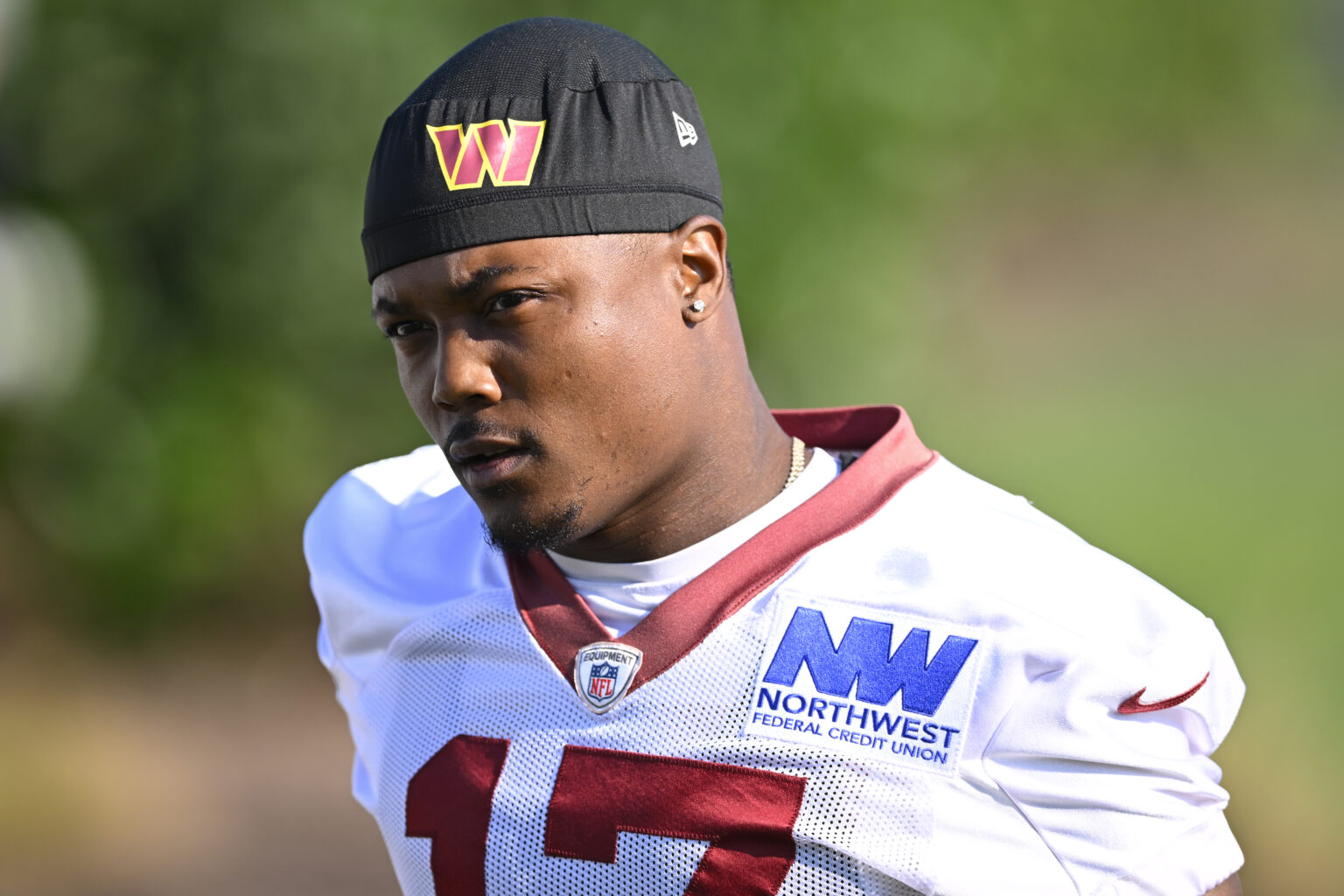Assessing the Future of Terry McLaurin’s Contract Negotiations: Is a Big Investment Justified?
The Rising Tide of the Wide Receiver Market
In the 2024 NFL season, Terry McLaurin showcased his elite talent with 82 receptions, amassing 1,096 yards and setting a personal best with 13 touchdowns. His stellar performance earned him a second Pro Bowl selection and his first All-Pro (second team) nod. According to advanced metrics from TruMedia, McLaurin ranked fourth among all wide receivers in expected points added (EPA), contributing approximately 61 total EPA-equivalent to roughly two additional wins for Washington.
Estimating the value of a single NFL victory at around $13.8 million, McLaurin’s 2024 contributions translate to a market value of approximately $27.1 million annually. However, the current market for top-tier wide receivers has surged far beyond this figure. Players like Ja’Marr Chase (Cincinnati Bengals) and Justin Jefferson (Minnesota Vikings) now command contracts exceeding $35 million per year. Meanwhile, CeeDee Lamb of the Dallas Cowboys and Amon-Ra St. Brown of the Detroit Lions are earning at least $30 million annually. Notably, Garrett Wilson of the New York Jets secured a four-year, $130 million extension after just three NFL seasons.
The challenge for McLaurin? The majority of these high-paid receivers are in their mid-20s. McLaurin, who will turn 30 this September, faces the reality that wide receiver production typically declines after this age milestone.
Age-Related Decline in Wide Receiver Performance
For outside receivers like McLaurin, crossing the age of 30 often signals a downturn rather than a new peak. Historical data on player aging curves indicates that wide receiver productivity-often measured through fantasy football scoring-peaks between ages 23 and 27. After age 28, a noticeable decline usually begins. While fantasy stats aren’t perfect proxies, they offer a reasonable glimpse into real-world performance trends. Based on these patterns, it’s more likely that McLaurin’s production will regress from last year’s heights rather than sustain or improve upon them in the coming seasons.
The core issue isn’t whether McLaurin was worth a $30 million-plus annual salary last year; it’s whether he remains worth that amount moving forward. The question becomes: how much should the Commanders invest in a player approaching his 30s?
Projecting Future Performance and Contract Value
Let’s consider an optimistic scenario where McLaurin maintains his peak performance for the next four seasons. Analyzing recent data, the most productive seasons for wide receivers at each age over the past five years suggest that a four-year window of top-tier output would total approximately $71.9 million, averaging around $18 million annually. This figure falls significantly short of the salary McLaurin is reportedly seeking.
Even if McLaurin were to dominate his age group every year, the cumulative value based solely on recent performance metrics would still not reach the high-end figures he appears to desire. This highlights a fundamental dilemma: while McLaurin has earned respect and recognition, NFL contracts are fundamentally about projecting future productivity, not past achievements. The data indicates that his upcoming seasons are more likely to resemble a gradual decline than a sustained peak, making a long-term, high-value deal risky for the franchise.
Strategic Contract Approaches for Washington
Despite the challenges, Washington still has strategic options to navigate McLaurin’s contract negotiations without jeopardizing their salary cap or creating discord within the locker room. One viable approach is to propose a shorter-term extension with performance-based incentives, allowing the team to reward McLaurin’s ongoing contributions while limiting long-term financial exposure. This approach provides flexibility to reassess after the upcoming season, considering factors like his health, continued performance, and the development of quarterback Jayden Daniels.
Alternatively, the team could hold off on a new deal and wait until 2025 to evaluate McLaurin’s performance and market value more accurately. This strategy assumes McLaurin is willing to play without a contract extension in the short term, which may or may not be feasible.
Another option is to explore a trade before the season or at the trade deadline. This could help Washington recoup some value before potentially losing McLaurin in free agency. However, such a move is likely to provoke fan backlash and could cause unrest within the team’s locker room.
It’s universally acknowledged that McLaurin has earned immense respect in Washington, and his contributions are undeniable. Yet, admiration alone doesn’t dictate contract decisions. Overpaying a player based on past performance or at the wrong time can hinder a franchise’s ability to build a balanced, competitive roster in the future.

